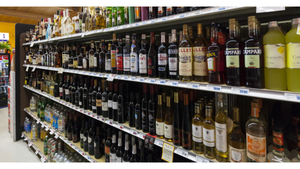VISIONS OF THE E-FUTURE FROM PASADENA
What will the future look like, when will it arrive and how long will it stick around?These aren't just philosophical questions for executives who live in the worlds of B-to-B and B-to-C communications.These are critical issues that need to be discussed before the industry can reach consensus and move forward.That was made clear last week at the Summit on e-commerce jointly sponsored by SN and sister
April 2, 2001
David Orgel
What will the future look like, when will it arrive and how long will it stick around?
These aren't just philosophical questions for executives who live in the worlds of B-to-B and B-to-C communications.
These are critical issues that need to be discussed before the industry can reach consensus and move forward.
That was made clear last week at the Summit on e-commerce jointly sponsored by SN and sister publication Executive Technology, both owned by Fairchild Publications. Retailers, suppliers and other industry executives converged on Pasadena, Calif., for a look at how the Internet is transforming communications. There are numerous pages of Summit coverage in this issue, and more will be presented in next week's issue as well.
Presentations during the Summit revealed that there's little agreement on anything dealing with the future -- not even on how far into the future is safe for discussion. In one panel on B-to-B commerce, some executives said they couldn't make predictions beyond an 18- to 24-month time frame, while others were willing to extend that to two to three years, some even to four or five years out.
There was little more agreement on how long it will take for specific projects to come to fruition. One workshop panelist said collaborative commerce will come of age within 18 months. Begging to differ slightly, Patrick Steele, executive vice president, information systems and technology at Albertson's, said by that time frame "collaborative commerce will come to its teenage years, with raging hormones. It will turn into a good adult, as long as it is parented properly. We must nurture everyone through this."
It turns out that executives are more in agreement on what's holding up the future: the need for better standards. This is particularly true in the B-to-B arena. Some executives stressed the importance of the work of the standards-setting UCCnet organization, while one panelist, bemoaning the problem of innacurate information in new-item product launches, urged adoption of a shared item catalog.
In the B-to-C space, there are conflicting visions of the business models of the future. Tesco.com executives offered an impressive look at their successful United Kingdom home-delivery fulfillment model, which picks products from conventional stores. But their approach is far from being the only one out there. Other operators are going with fulfillment models based on fast-pick centers or warehouses. Even Tesco concedes that its approach only works well up to a point -- 10 million orders per year, to be specific. After that, Tesco may need to graduate to a satellite warehouse to get lower fulfilment costs.
We needn't be alarmed that there's so much debate about the future of electronic commerce. Maybe the most important message to come out of Pasadena was that you don't need to know exactly where things are headed before you jump in and participate. In fact, at that point it's probably too late.
A final observation from the Summit on change and the future is perhaps the most comforting of all for a society obsessed with the Internet. "Eventually, people will see the Internet and Internet technologies as tools," said James McCurry, chief executive officer of Cerespan.com. "Conferences will go back to discussing supply chain issues. Internet tools will be only one among many topics. We'll take it for granted."
About the Author
You May Also Like




